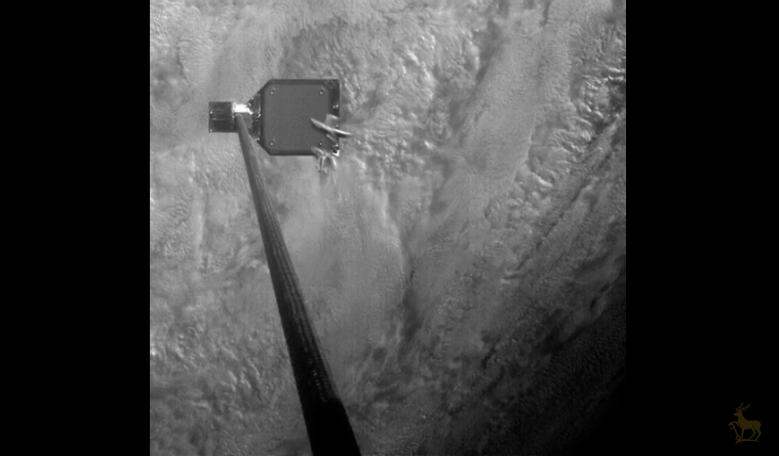Having proved it can capture mock junk in space with a net, the RemoveDEBRIS satellite passes its third experiment by successfully using its on-board harpoon-capture system in orbit to skewer a piece of metal acting as a satellite panel.
The Airbus Stevenage designed harpoon was fired at 20 metres/sec to penetrate a target held on a 1.5 metre boom deployed from the main RemoveDEBRIS spacecraft; a test it completed successfully when the small head of the harpoon convincingly punched a hole through the metal plate.
“This is RemoveDEBRIS’ most demanding experiment and the fact that it was a success is testament to all involved. The RemoveDEBRIS project provides strong evidence of what can be achieved with the power of collaboration – pooling together the experience across industry and the research field to achieve something truly remarkable,” said Professor Guglielmo Aglietti, Director of the Surrey Space Centre at the University of Surrey.
While the mission and consortium coordination is led by the Surrey Space Centre (UK), the RemoveDEBRIS consortium consists of leading space companies and research institutions throughout Europe and Africa, including ArianeGroup, and Innovative Solutions in Space and is co-funded by the European Commission.
The debris-collecting device is one of the world’s first in situ machines aimed at carrying out what its namesake suggests - removing the growing build-up of dangerous ‘space junk’ that fills our skies around our planet.
It is estimated that there are more than 7,600 tonnes of unwanted refuse of varying sizes and mostly composed of metal in and around Earth’s orbit - with some approaching speeds of 30,000 miles per hour as they whizz around our planet.
“This mission is a powerful example of the UK's expertise in space technology and that by working together our world-class universities and innovative companies can hugely contribute to the government’s aims for a highly skilled economy through our modern Industrial Strategy,” says Chris Skidmore MP, Minister of State for Universities, Science, Research and Innovation.
The satellite has so far passed all test thrown at it, including trilling its state-of-the-art LiDAR and camera based vision navigation system to spot the space junk and now the team is preparing for the final experiment. Set to take place in March, RemoveDEBRIS will inflate a sail that will pull the satellite into Earth’s atmosphere where it will burn up and be destroyed.
To see the harpoon in action, click here.











